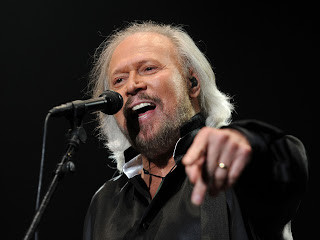Forty years after it topped the US charts, “You Should Be Dancing” by the Bee Gees remains an iconic disco anthem. Barry Gibb, in a recent interview, shared fascinating insights into the creation of this timeless hit, revealing the intricate layers and collaborative spirit that defined its sound. This article delves into the backstory of “You Should Be Dancing,” exploring the recording process, the unique vocal arrangements, and the lasting legacy of this dance-floor classic.
The Genesis of a Dance Anthem
The Bee Gees crafted “You Should Be Dancing” during a period of musical exploration and innovation. Barry Gibb recalls that the track wasn’t an overnight creation; it was meticulously built over two weeks, undergoing multiple iterations. “I remember that we cut the track at least four times,” Gibb stated, highlighting the band’s dedication to perfecting every detail. This iterative process underscores their commitment to pushing musical boundaries and achieving a sound that was both rhythmically complex and irresistibly catchy.
 Barry Gibb in 2016, reflecting on the Bee Gees' musical journey
Barry Gibb in 2016, reflecting on the Bee Gees' musical journey
Rhythmic Innovation and Latin Influences
Living in Miami during the recording of “You Should Be Dancing” profoundly influenced the song’s rhythmic texture. Gibb explained, “We were discovering more accurate rhythms, we were discovering Latin rhythms and because we lived in Miami that was all around us so it just happened that way.” This immersion in Latin music is evident in the song’s vibrant percussion, which features the legendary Stephen Stills. Stills’ contribution, laying down percussion tracks at unconventional hours, added another layer of richness to the song’s rhythmic tapestry. Gibb reminisced, “Stephen Stills playing percussion at 5 in the morning, you know? With um, playing sticks.” This anecdote paints a picture of a creative environment where experimentation and collaboration were paramount.
Vocal Harmonies and Hidden Falsettos
The Bee Gees are renowned for their intricate vocal harmonies, and “You Should Be Dancing” is a prime example of their vocal artistry. Barry Gibb revealed a surprising detail about the song’s mix: his falsetto vocals are subtly woven into the trumpet solo. “And if you’re like me, you might be surprised to learn that buried within the final mix of You Should Be Dancing is Barry singing along in falsetto with the iconic trumpet solo.” This hidden vocal layer exemplifies the depth and complexity of the Bee Gees’ arrangements, rewarding repeated listens with new discoveries. Listening to vocal-only versions of the song, as Gibb suggests, further illuminates these intricate vocal details, showcasing the clarity and precision of their harmonies.
The Collaborative Mixing Process
Mixing “You Should Be Dancing” was a collaborative and technically demanding endeavor. In the pre-digital era, mixing required a hands-on approach, with multiple engineers manipulating faders simultaneously. Gibb described the intensity of the process: “I remember that You Should Be Dancing in particular, it took 10 of us to mix that song. [As in], 10 at the board. You couldn’t update anything, there was no such thing. So you had to do the whole mix at once with everybody moving faders.” Gibb’s specific role during the mix – controlling the echo repeat on the line “Whatcha’ doin’ on ya’ back?” – illustrates the precision and coordination required for this analog mixing process. The anecdote of having to restart the entire mix if anyone made a mistake emphasizes the high stakes and collaborative spirit of the recording sessions.
A Song Born to Be a Smash Hit
While artists often find it difficult to predict a song’s success, Barry Gibb acknowledged that “You Should Be Dancing” felt special from its inception. “I think you can look at each other and go, ‘this is great. This is special.’ Whether it’s chart special or radio special, this was special for us.” He likened the song’s creation to artists drawing inspiration from their idols, referencing Paul McCartney’s admiration for the Beach Boys. “There’s someone out there you really admire and you want to do a song like that so You Should Be Dancing fits that mold.” The Bee Gees aimed to create a song that captured the burgeoning dance craze, and their intuition proved correct, as “You Should Be Dancing” became a defining anthem of the disco era.
The Enduring Appeal
“You Should Be Dancing” continues to resonate with audiences today, four decades after its release. Its infectious rhythm, intricate vocal arrangements, and rich sonic texture contribute to its timeless appeal. Barry Gibb’s insights into the song’s creation provide a deeper appreciation for the artistry and collaborative effort behind this disco classic. For those seeking the lyrics to “You Should Be Dancing” Bee Gees, numerous online resources offer access to sing along with this iconic track and experience the magic of the Bee Gees. The song stands as a testament to the Bee Gees’ musical innovation and their enduring impact on popular music.
